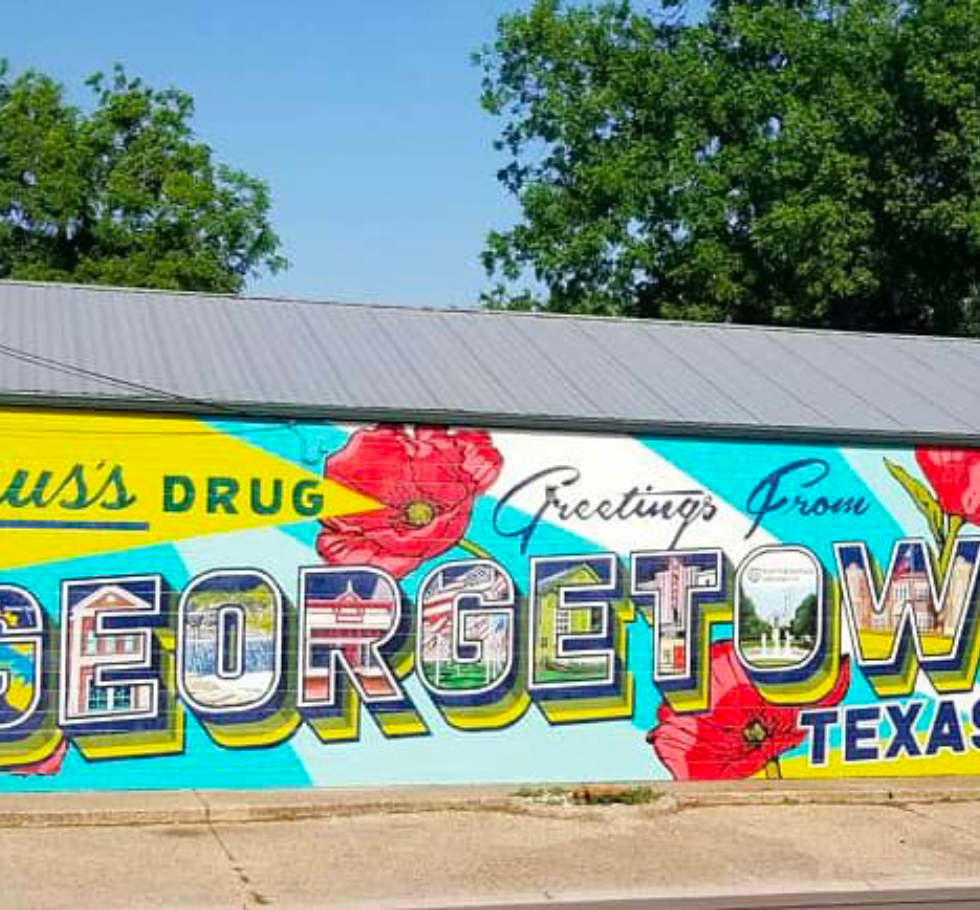Transportation Report for Central Texas: 2024 Review and 2025 Outlook
Executive Summary
Central Texas is undergoing significant transformations in its transportation landscape, driven by legislative changes, extensive infrastructure projects, and advancements in autonomous vehicle technology. This report reviews the key transportation developments in 2024 and provides an outlook for 2025, focusing on legislative updates, major infrastructure projects in Austin and San Antonio, public transit enhancements, and the integration of autonomous vehicles. These initiatives aim to improve mobility, reduce congestion, enhance safety, and support the region’s rapid growth.
Table of Contents
- Introduction
- Legislative Changes
- Vehicle Safety and Emissions Testing
- Infrastructure Projects
- Austin-Bergstrom International Airport Upgrades
- CapMetro Developments
- City of Austin Projects
- San Antonio Transportation Projects
- Autonomous Vehicles
- Robotaxi Services
- Autonomous Semi-Trucks
- Project Connect
- Other Transportation News
- Future Outlook
- Conclusion
Introduction
Central Texas, encompassing major urban centers like Austin and San Antonio, is experiencing a transportation evolution fueled by legislative reforms, multimillion-dollar infrastructure projects, and technological advancements. As the region grapples with increased population growth and economic activity, these developments are crucial in enhancing mobility, reducing traffic congestion, and ensuring sustainable transportation systems.
Legislative Changes
Vehicle Safety and Emissions Testing
Effective January 1, 2025, Texas has enacted a new state law eliminating the requirement for annual vehicle safety inspections for all noncommercial vehicles. This legislative change, encapsulated in House Bill 3297, mandates that drivers pay a $7.50 inspection replacement fee instead of undergoing a physical inspection.
However, this exemption does not apply uniformly across the state. In the 17 most populous counties, including urban hubs like Dallas, Houston (Harris County), and Austin (Travis County), emissions tests remain mandatory for vehicle registration. These tests ensure that vehicles comply with state and federal air quality standards, particularly in counties designated as “nonattainment” for ozone pollutants.
Key Points:
- Safety Inspections: No longer required statewide for noncommercial vehicles; replaced by a fee.
- Emissions Tests: Still mandatory in 17 populous counties; essential for vehicle registration.
- Penalties: Failure to comply with emissions testing results in vehicle registration violations and potential fines.
Infrastructure Projects
Austin-Bergstrom International Airport Upgrades
Under the Journey With AUS program, Austin-Bergstrom International Airport (AUS) has made substantial progress in 2024:
- Transportation Security Administration (TSA) Checkpoint 3 Closure: Initiated in February 2024, directing all guests to use Checkpoints 1 and 2 East, with Checkpoint 2 West reserved for TSA PreCheck and Clear passengers.
- Federal Inspection Services Improvements: Ongoing construction in the international arrivals area, featuring new baggage carousels, expanded traveler space, and additional processing booths to expedite international arrivals.
- West Infill Project: Adding square footage to the Barbara Jordan Terminal to expand TSA Checkpoint 3 from six to eight lanes and support a new outbound baggage handling system. Construction began in August 2024 and is expected to complete by spring 2025.
- Federal Funding: AUS received over $33 million from the Bipartisan Infrastructure Law for constructing Concourse B and a new underground tunnel connecting it to the Barbara Jordan Terminal.
- Upcoming Projects for 2025: Construction of a new parking garage to replace the Red Garage and continued design and engineering for midfield concourse and arrivals/departures hall projects.
Impact: These upgrades aim to enhance passenger experience, increase processing efficiency, and accommodate future growth in international travel.
CapMetro Developments
2024 Highlights:
- McKalla Station at Q2 Stadium: Completed and opened in February 2024 as part of the Project Connect mass transit program, providing a Red Line rail stop directly outside the stadium.
- CapMetro Bikeshare Program: Launched in July 2024, featuring 100% electric-assisted bikes and new stations, replacing the former MetroBike system.
- Transit Plan 2035: Community feedback collection initiated in summer 2024, with additional feedback sessions planned for spring 2025. The official adoption of the transit plan is anticipated in summer or fall 2025.
Future Plans:
- Expansion of rail services and additional bikeshare stations.
- Finalization and implementation of Transit Plan 2035 to guide mass mobility developments over the next decade.
City of Austin Projects
Key Projects:
- Barton Springs Road Bridge Replacement:
- Funding: Received $32 million from the Bipartisan Infrastructure Law.
- Scope: Replacement of the nearly 100-year-old bridge to address structural integrity and accommodate increased traffic.
- Our Future 35 ‘Cap and Stitch’ Program:
- Vision Plan: Draft released in November 2024 outlining the capping of Interstate 35 to create new public spaces.
- Funding: Austin City Council to vote on funding in March 2025, following an extension from the initial December deadline.
- Cost Estimate: Over $1 billion for full implementation.
- Vision Zero Program Milestone:
- Achievements: Completed first round of bond-funded safety projects, including new crosswalks, shared-use paths, and signal timing upgrades.
- Future Plans: Addressing a dozen more intersection safety projects funded by 2018 and 2020 mobility bonds.
- Longhorn Dam Multimodal Improvements Project:
- Construction: Began in 2024, featuring a new pedestrian and cyclist “wishbone” bridge over Lady Bird Lake.
- Completion: Expected by 2025.
- Interstate 35 Expansion:
- Capital Express Central Project: Initiated in late October 2024, a $4.5 billion project to expand and overhaul eight miles near downtown Austin.
- Phases: Divided into six phases, starting with the Martin Luther King Jr. Boulevard Bridge reconstruction.
- Timeline: Completion anticipated around 2032-2033.
- Project Connect:
- Development Phase: Entered in May 2024, focusing on securing federal funding and advancing the draft environmental impact statement.
- Light Rail Corridor: Phase 1 implementation planned for 2027, with trains operational by 2033.
- Congress Avenue Revamp:
- Proposal: Reimagined Congress Avenue with a community plaza and pedestrian-friendly spaces between Cesar Chavez Street and 11th Street.
- Funding and Design: Expected to begin in 2025, prioritizing the northern end for better connectivity with the Capitol complex.
San Antonio Transportation Projects
Major Initiatives for 2025:
- New Interchange and Loop 1604 Expansion:
- Interchange Between Loop 410 and Interstate 10 East:
- Cost: $156 million
- Completion: Mid-2025
- Features: Two ramps, including a 123-foot tall ramp, to alleviate congestion.
- Loop 1604 Expansion:
- Scope: Expansion from four to ten lanes between Bandera Road and Interstate 35.
- Cost: $1.4 billion
- Completion: 2028
- Interchange Between Loop 410 and Interstate 10 East:
- US 90 Westbound Expansion:
- Phase 1: Widening from Loop 410 to Loop 1604 into a six-lane freeway with access roads.
- Start Date: 2025
- City Road Projects:
- South Alamo Street Remake: Revitalization of the Hemisfair district.
- Commerce, San Saba, and Santa Rosa Streets: Pedestrian and streetscape improvements in the Zona Cultural area.
- Prue Road Reconstruction: $40.3 million project on the Northwest Side.
- VIA Metropolitan Transit Green Line:
- Bus Rapid Transit Route: From the South Side through downtown to San Antonio International Airport.
- Features: Designated lanes, optimized traffic signals, and high-frequency service.
- Completion: 2027
Impact: These projects aim to enhance traffic flow, reduce congestion, and improve connectivity across San Antonio, supporting its status as a growing economic hub.
Autonomous Vehicles
Robotaxi Services
Waymo Partnership with Uber:
- Announcement: September 13, 2024
- Service Launch: Early 2025 via the Uber ride-hailing app.
- Fleet: Fully autonomous, all-electric Jaguar I-PACE vehicles, with plans to expand to hundreds of cars.
- Impact: Enhanced accessibility to autonomous transportation, reduced reliance on personal vehicles, and potential decreases in traffic congestion.
Zoox Testing in Austin:
- Start Date: Summer 2024
- Scope: Deployment of self-driving vehicles in business and entertainment districts.
- Features: AI-driven navigation adapted to Austin’s unique traffic patterns and weather conditions.
Autonomous Semi-Trucks
Kodiak Robotics:
- Operations: Hauling goods for IKEA, C.R. England, and Tyson Foods.
- Expansion: Transition to solo operations by end of 2024, removing safety drivers from trucks.
- Smart Corridor Development:
- Location: SH 130 from Georgetown through Del Valle.
- Features: Sensors and cameras to assist autonomous trucks in navigation and hazard detection.
- Launch Date: To be announced.
Impact: Autonomous trucks promise increased efficiency in freight transport, reduced labor costs, and enhanced safety on highways.
Project Connect
Overview: Project Connect is Austin’s ambitious plan to develop a comprehensive light rail and rapid bus network to address the city’s growing transportation needs.
2024 Milestones:
- Project Development Phase: Entered in May 2024, securing potential federal funding.
- Environmental Impact Statement (EIS): Draft in progress, with community engagement slated for January 2025.
- Financial Commitments: Ongoing efforts to finalize funding mechanisms, including possible airport connections.
2025 Plans:
- Construction Start: Projected for 2027.
- Phase 1 Corridor: 9.8-mile light rail line from 38th Street to Oltorf Street and Yellow Jacket Lane.
- Completion Date: 2033 for operational light rail trains.
Funding and Partnerships:
- Federal Transit Administration (FTA): Seeking grants to cover approximately 50% of project costs.
- AECOM Technical Services Inc.: Secured as the delivery partner with a $98 million contract.
Community Impact: Project Connect aims to reduce traffic congestion, provide reliable public transit options, and foster economic growth by improving accessibility across Austin. By linking key areas of the city, this project is expected to encourage transit-oriented development, reduce reliance on personal vehicles, and support environmental sustainability goals.
Other Transportation News
SH 130 Expansion in Williamson County
- Funding Approved: $250 million by the Capital Area Metropolitan Planning Organization (CAMPO).
- Project Scope: Widening SH 130 from two lanes to three lanes in each direction over 15 miles.
- Total Cost: $300 million, funded through toll operations.
- Start Date: 2027
- Smart Corridor Development: Integration of technologies to support autonomous semitrucks.
Round Rock Kenney Fort Boulevard
- Completion: New section opened on December 6, 2024, connecting Forest Creek Drive to SH 45.
- Features: Six-lane divided roadway with traffic signals at key intersections.
- Future Plans: Extend Kenney Fort Boulevard to connect Pflugerville, Round Rock, and Georgetown.
Highway 290 Revamp
- Scope: 13-mile stretch from Oak Hill to Dripping Springs.
- Upgrades:
- Widening from four to six lanes.
- Adding dividers, frontage roads, sidewalks, and bike lanes.
- Eliminating stoplights to improve traffic flow.
- Start Date: To be announced.
Hays County Transportation Bond
- Approval: $440 million bond passed in December 2024.
- Purpose: Funding 35 transportation projects focused on safety, mobility, and regional connectivity.
- Impact: Significant improvements on the east side of I-35, addressing historically neglected areas.
Future Outlook
2025 Expectations
- Legislative Compliance: Continued adherence to emissions testing requirements in major counties.
- Infrastructure Completion: Key Austin and San Antonio projects reaching major milestones, enhancing regional connectivity.
- Public Transit Expansion: Implementation of Transit Plan 2035 and the Green Line bus rapid transit route in San Antonio.
- Autonomous Vehicle Integration: Expansion of Waymo’s robotaxi services and autonomous truck operations on smart corridors.
- Project Connect Progress: Advancing design phases and community engagement, paving the way for 2027 construction commencement.
Long-Term Projections
- Sustainable Mobility: Increased reliance on public transit, autonomous vehicles, and multimodal transportation options.
- Economic Growth: Enhanced infrastructure supporting business expansion and attracting new investments.
- Environmental Impact: Improved air quality through emissions testing and reduced vehicle reliance, contributing to Texas’ sustainability goals.
- Urban Development: Transformation of downtown areas with projects like Congress Avenue Revamp and I-35 Cap and Stitch, fostering vibrant, pedestrian-friendly environments.
Conclusion
Central Texas is poised for substantial advancements in its transportation infrastructure and services, driven by proactive legislative changes, extensive construction projects, and innovative technologies. The developments in Austin and San Antonio reflect a commitment to enhancing mobility, reducing congestion, and ensuring sustainable growth to meet the region’s evolving needs. As these projects progress into 2025 and beyond, Central Texas stands as a model for integrated, forward-thinking transportation planning.
At Front Line Advisory Group, we are pioneers in Capital Improvement Bond Management, leveraging unparalleled expertise and deep industry insights. Our mission extends beyond consultation – we empower our clients to realize the full potential of their investments, ensuring tax dollars are put to maximum use through astute Program Management Consulting. For more information or to commence your journey towards transformative bond management, reach out to us at info@frontlineadvisorygroup.com













